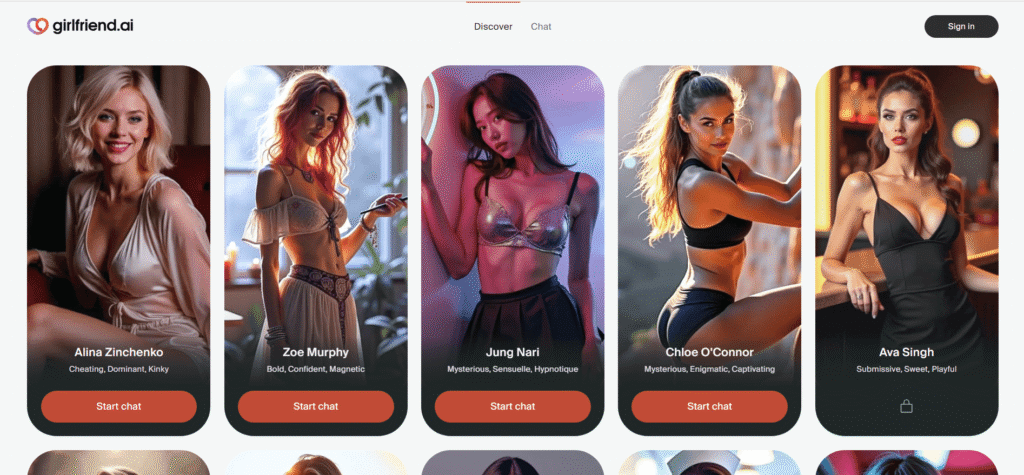Getting Started with Your AI Companion Business
Starting an AI companion business can feel intimidating at first, but if we break it down step by step, it becomes much more manageable. We’ve noticed that many successful AI ventures begin with a clear understanding of the type of companion they want to create. For instance, if you are focusing on an AI girlfriend, you need to know the features and interactions that will make their experience feel genuine and enjoyable.
Choosing the Right AI Platform
When I first began, I realized that picking the right AI platform makes a huge difference. Not every platform is designed for conversational depth or emotional responses. We specifically looked for tools that allow customization, personality creation, and memory features. This ensures that your users feel like their AI companion remembers them and can chat naturally.
Some factors to consider when selecting your AI tool:
- Ability to personalize responses
- Support for multimedia (images, voice, GIFs)
- Integration options for a website or app
- Cost efficiency for your first 90 days
Understanding Your Audience
Before creating an AI gf or AI companion, we spent time understanding what users truly want. Admittedly, it’s not just about having a chatbot that replies—it’s about creating an experience. Many people are drawn to AI companions for:
- Casual conversation and company
- Emotional support during lonely moments
- Fun interactions, roleplay, or themed chat experiences
By knowing their desires, we were able to design features that felt personal. For example, some users prefer light-hearted chats, while others want deeper conversations. Clearly, tailoring your AI to meet these needs increases engagement and long-term retention.
Setting Goals for the First 90 Days
We set small, achievable goals for our first 90 days. Initially, it was about building a functional prototype, testing it with a small group, and collecting feedback. Subsequently, we refined the interactions based on real user behaviour. This way, by the end of 90 days, our AI companion was not only ready for launch but also appealing to early adopters.
- Week 1–2: Choose platform, define personality, and sketch chat scenarios
- Week 3–4: Build a prototype and test internally
- Week 5–6: Invite early users and gather feedback
- Week 7–9: Refine experience and prepare for public launch
- Week 10–12: Launch publicly and start initial marketing
Building and Launching Your AI Companion
Once we had a clear plan, the next step was to bring our AI companion to life. This phase is where the experience really takes shape, and where an AI girlfriend chat becomes more than just scripted responses—it becomes an interactive, enjoyable conversation.
Designing the Chat Experience
We focused on making interactions feel personal and natural. They don’t just want answers—they want connection. In the same way that human relationships rely on understanding and responsiveness, your AI companion should respond in ways that feel authentic. Some tips we followed:
- Use multiple conversation paths to avoid repetition
- Include humour and casual banter for relatability
- Allow the AI to “remember” user preferences for continuity
- Add occasional surprises, like recommendations or fun facts
This approach helped us create a chat experience that users returned to, often spending more time engaging with the AI.
Setting Up Your AI Girlfriend Website
A strong online presence is crucial. We created an AI girlfriend website that was simple, visually appealing, and easy to navigate. Users should immediately understand what they can do, whether it’s chatting with the AI or exploring subscription options.
Key features we implemented:
- Clear call-to-action buttons for starting a chat
- Sections highlighting AI personality and capabilities
- FAQ and support for new users
- Integration with payment systems for future monetization
Of course, the website is also where users can sign up for updates or free trials, which helps build a loyal base before monetization begins.
Testing and Refining
Before going fully public, we ran several testing phases with small groups. Even minor tweaks, like changing phrasing in the AI’s responses or adjusting the layout of the website, significantly improved engagement. Consequently, the final version of our AI companion was polished and user-friendly.
- Invite beta users and track their interactions
- Adjust dialogue to sound more natural
- Optimize website navigation based on feedback
- Prepare analytics to track usage and retention
By the end of this stage, our AI companion was ready for launch: it had engaging chat capabilities and a functional website that could handle early traffic.
Monetizing and Growing Your AI Companion
Once our AI companion was live, the focus shifted to generating revenue and growing our user base. At this stage, we wanted to attract users with a free AI girlfriend experience and gradually introduce paid options for those who enjoyed it the most.
Offering a Free Trial to Attract Users
We realized that letting users experience the AI without any commitment was essential. This approach not only increased adoption but also allowed us to gather valuable insights on how people interact with their AI companion.
- Provide basic chat functionality for free
- Offer limited access to special features or personality traits
- Encourage users to share feedback and invite friends
In comparison to launching a paid-only model, this strategy clearly increased engagement and gave users a reason to return regularly.
Converting Users into Paying Customers
After users fell in love with their AI companion, we introduced premium features. For example, additional conversation scenarios, personalized roleplay options, and exclusive AI personalities. Specifically, we structured subscriptions that were affordable and flexible, so users felt like they were getting real value.
- Monthly or yearly subscription plans
- Exclusive AI personalities or advanced chat topics
- Special interaction modes like storytelling or advice sessions
This method ensured a steady revenue stream while keeping users happy and engaged.
Marketing Your AI Companion
We promoted our AI companion through multiple channels: social media, forums, and communities that focus on virtual companions. Admittedly, authentic engagement works better than aggressive promotion. We shared tips, highlighted the best AI girlfriend features, and showcased user experiences to attract attention organically.
Tips for marketing effectively:
- Post real interaction screenshots (with user consent)
- Create short videos demonstrating the AI in action
- Engage with communities that are interested in AI companions
Measuring Success and Scaling
Finally, we tracked metrics like daily active users, retention rates, and conversion rates. Eventually, this data helped us understand what worked and where to improve. As a result, we could scale confidently, add new AI personalities, and even explore collaborations with other platforms.
- Track engagement and feedback continuously
- Test new features and update based on user preferences
- Explore partnerships to reach broader audiences
By following this approach, we not only launched an AI companion but also built a sustainable business model within 90 days.
Conclusion
Launching and monetizing your AI companion in just 90 days is absolutely achievable if you take it step by step. We started by understanding our audience and choosing the right platform, then focused on building an engaging AI girlfriend chat experience and a user-friendly AI girlfriend website. Offering a free AI girlfriend trial helped attract users, while premium features turned them into paying customers.
In the same way, consistently listening to feedback, refining interactions, and promoting the best AI girlfriend features allowed us to grow and sustain the business. Clearly, success doesn’t happen overnight, but with a structured plan, dedication, and attention to what users truly want, anyone can turn an idea into a profitable AI companion venture in just three months.



